Malcolm R. Campbell's Blog, page 13
January 23, 2024
‘John Dee and the Empire of Angels: Enochian Magick and the Occult Roots of the Modern World’ by Jason Louv
“John Dee (13 July 1527 – 1608 or 1609) was an English mathematician,  astronomer, astrologer, teacher, occultist, and alchemist. He was the court astronomer for, and advisor to, Elizabeth I, and spent much of his time on alchemy, divination, and Hermetic philosophy. As an antiquarian, he had one of the largest libraries in England at the time. As a political advisor, he advocated the foundation of English colonies in the New World to form a ‘British Empire’, a term he is credited with coining. . . His goal was to help bring forth a unified world religion through the healing of the breach of the Roman Catholic and Protestant churches and the recapture of the pure theology of the ancients.” – Wikipedia
astronomer, astrologer, teacher, occultist, and alchemist. He was the court astronomer for, and advisor to, Elizabeth I, and spent much of his time on alchemy, divination, and Hermetic philosophy. As an antiquarian, he had one of the largest libraries in England at the time. As a political advisor, he advocated the foundation of English colonies in the New World to form a ‘British Empire’, a term he is credited with coining. . . His goal was to help bring forth a unified world religion through the healing of the breach of the Roman Catholic and Protestant churches and the recapture of the pure theology of the ancients.” – Wikipedia
If you read about the hermetic philosophy and its impact on religion in non-fiction and fiction, or the Reign of Queen Elizabeth I, you will sooner or later come across John Dee. His influene extended into multiple areas, one being his belief in the value of communicating with angels. Louv’s book is a well-written exploration of Dee’s life.
From the Publisher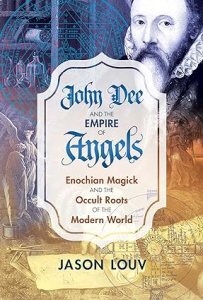 “A comprehensive look at the life and continuing influence of 16th-century scientific genius and occultist Dr. John Dee
“A comprehensive look at the life and continuing influence of 16th-century scientific genius and occultist Dr. John Dee
“• Presents an overview of Dee’s scientific achievements, intelligence and spy work, imperial strategizing, and his work developing methods to communicate with angels
“• Pieces together Dee’s fragmentary Spirit Diaries and examines Enochian in precise detail and the angels’ plan to establish a New World Order
“• Explores Dee’s influence on Sir Francis Bacon, modern science, Rosicrucianism, and 20th-century occultists such as Jack Parsons, Aleister Crowley, and Anton LaVey
“Dr. John Dee (1527-1608), Queen Elizabeth I’s court advisor and astrologer, was the foremost scientific genius of the 16th century. Laying the foundation for modern science, he actively promoted mathematics and astronomy as well as made advances in navigation and optics that helped elevate England to the foremost imperial power in the world. Centuries ahead of his time, his theoretical work included the concept of light speed and prototypes for telescopes and solar panels. Dee, the original “007” (his crown-given moniker), even invented the idea of a “British Empire,” envisioning fledgling America as the new Atlantis, himself as Merlin, and Elizabeth as Arthur.
“But, as Jason Louv explains, Dee was suppressed from mainstream history because he spent the second half of his career developing a method for contacting angels. After a brilliant ascent from star student at Cambridge to scientific advisor to the Queen, Dee, with the help of a disreputable, criminal psychic named Edward Kelley, devoted ten years to communing with the angels and archangels of God. These spirit communications gave him the keys to Enochian, the language that mankind spoke before the fall from Eden. Piecing together Dee’s fragmentary Spirit Diaries and scrying sessions, the author examines Enochian in precise detail and explains how the angels used Dee and Kelley as agents to establish a New World Order that they hoped would unify all monotheistic religions and eventually dominate the entire globe.
“Presenting a comprehensive overview of Dee’s life and work, Louv examines his scientific achievements, intelligence and spy work, imperial strategizing, and Enochian magick, establishing a psychohistory of John Dee as a singular force and fundamental driver of Western history. Exploring Dee’s influence on Sir Francis Bacon, the development of modern science, 17th-century Rosicrucianism, the 19th-century occult revival, and 20th-century occultists such as Jack Parsons, Aleister Crowley, and Anton LaVey, Louv shows how John Dee continues to impact science and the occult to this day.”
Publishers Weekly Review
 “Louv (Hyperworlds, Underworlds) delivers an overwhelming amount of information in this sweeping attempt to reconcile two schools of thought about Elizabethan scientist John Dee (1527–1608). Historians concerned with Dee generally fall into two camps, writes Louv: the political historians embarrassed by Dee’s late-in-life angelic obsessions, and the occultists indifferent to Dee’s involvement in the development of British intellectualism and politics. By elucidating the “direct intersection between the forces of magic and the machinery of empire,” Louv, with moderate success, argues for the importance of Dee’s ideas throughout the last 500 years of Western history. ” (Click on PW logo for complete review.)
“Louv (Hyperworlds, Underworlds) delivers an overwhelming amount of information in this sweeping attempt to reconcile two schools of thought about Elizabethan scientist John Dee (1527–1608). Historians concerned with Dee generally fall into two camps, writes Louv: the political historians embarrassed by Dee’s late-in-life angelic obsessions, and the occultists indifferent to Dee’s involvement in the development of British intellectualism and politics. By elucidating the “direct intersection between the forces of magic and the machinery of empire,” Louv, with moderate success, argues for the importance of Dee’s ideas throughout the last 500 years of Western history. ” (Click on PW logo for complete review.)
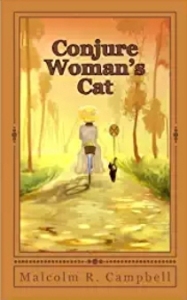 Malcolm R. Campbell is the author of magical realism novels set in the Florida Panhandle.
Malcolm R. Campbell is the author of magical realism novels set in the Florida Panhandle.
January 22, 2024
They can’t cure what I got
I know that sounds like the opening line of a love song where the loved one is a dangerous thing. But alas, that’s not the case.
 What I got, is Irritable Bowel Syndrome (IBS). Everyone seems to agree that the bowels are irritated one way or another, but opinions are mixed about what causes it and what (if anything) gets rid of it.
What I got, is Irritable Bowel Syndrome (IBS). Everyone seems to agree that the bowels are irritated one way or another, but opinions are mixed about what causes it and what (if anything) gets rid of it.
The Mayo Clinic says, “Irritable bowel syndrome (IBS) is a common disorder that affects the stomach and intestines, also called the gastrointestinal tract. Symptoms include cramping, abdominal pain, bloating, gas, diarrhea, constipation, or both. IBS is a chronic condition that you’ll need to manage long term.”
I’m trying to discover what my “trigger foods” are in case that makes any difference in this ailment I’ve been fighting since June. A lot of the foods I like are on the don’t go there list. I’m drinking a glass one red wine right now. It’s on the might be good/might be bad list.
I can’t have cow’s milk or yogurt, apples, asparagus, wheat, broccoli, soy products, or sweeteners. I can have Lactaid, blueberries, hard cheeses such as feta, cantaloupe, potatoes, and lettuce. So, win some, lose some.
I’m looking at a diet called FODMAP, i.e., “What is FODMAP? FODMAP stands for fermentable oligosaccharides, disaccharides, monosaccharides, and polyols, which are short-chain carbohydrates (sugars) that the small intestine absorbs poorly.”
According to Johns Hopkins,
 “Low FODMAP is a three-step elimination diet:
“Low FODMAP is a three-step elimination diet:
My first thought is, that seems really tedious. But I have no choice. I’m testing red wine today.
A lot of people have IBS. Many don’t know it. Those who do know can find information at the Mayo Clinic and Johns Hopkins sites, among others. FODMAP diet information can be found here.
Now I’ve got the Gordon Lightfoot song “For Loving Me” stuck inside my head. I’m sure it’s about cauliflower and snow peas. I ate them with wild abandon, unmindful of the consequences.
–Malcolm
January 21, 2024
‘The Zohar’: the heart of Kabbalah
The Zohar (Hebrew: זֹהַר, Zōhar, lit. “Splendor” or “Radiance”) is a foundational work of Kabbalistic literature. It is a group of books including commentary on the mystical aspects of the Torah (the five books of Moses) and scriptural interpretations as well as material on mysticism, mythical cosmogony, and mystical psychology. The Zohar contains discussions of the nature of God, the origin and structure of the universe, the nature of souls, redemption, the relationship of Ego to Darkness, and the “true self” to “The Light of God”. – Wikipedia
I once had a multi-volume copy of The Zohar in Hebrew and English, but donated it to a library when we downsized during the last move. I miss the volumes and hope that students will discover the books and along with them, the inner and outer universes.
According to My Jewish Learning, “The Zohar, however, is now one of the better-known works of kabbalistic literature, thanks to the early 20th-century scholarship of the German-born Israeli philosopher Gershom Scholem and to recent English translations. Though difficult to understand, due to the dense and obscure cosmological system the text inhabits, even in translation, the Zohar invites those willing to explore it into a fantastical universe filled with spiritual contemplation and insight.”
 The Kabbalah Center, a website worthy of checking out if you are new to Jewish mysticism, says, “The Zohar is a holy book. Its origin is Light. Its purpose is to bring Light. Its nature and substance are Light, so much so that the mere possession of the Zohar can repel darkness and surround those who possess it with merciful protection. As Rav Berg wrote, ‘The Zohar represents humankind’s best hope of a solution to the chaos that has afflicted it since the beginning of history. Through the Zohar, we shall assuredly transform this planet into one of peace and tranquility.’”
The Kabbalah Center, a website worthy of checking out if you are new to Jewish mysticism, says, “The Zohar is a holy book. Its origin is Light. Its purpose is to bring Light. Its nature and substance are Light, so much so that the mere possession of the Zohar can repel darkness and surround those who possess it with merciful protection. As Rav Berg wrote, ‘The Zohar represents humankind’s best hope of a solution to the chaos that has afflicted it since the beginning of history. Through the Zohar, we shall assuredly transform this planet into one of peace and tranquility.’”
Other reading and courses at sites like The Kabbalah Center, I suggest a good starting point book for discovering The Zohar is an overview such as Zohar: Annotated & Explained edited by Daniel Chanan Matt.
From the Publisher “The best-selling author of The Essential Kabbalah now offers readers the best introduction to the Zohar.
“The best-selling author of The Essential Kabbalah now offers readers the best introduction to the Zohar.
“The splendor and enigmatic appeal of the Zohar, the major text of the Jewish mystical tradition, has never intrigued readers of all faiths more than it does today. But how can we truly understand it?
“Daniel C. Matt brings together in one place the most important teachings from the Zohar, the cornerstone of Kabbalah―described as a mixture of theology, mystical psychology, anthropology, myth, and poetry―alongside facing-page stories, notes, and historical background that illuminate and explain the text. Ideal for the first-time reader with no prior knowledge of Jewish mysticism.
“Guides readers step-by-step through the texts that make up the Zohar―midrash, mystical fantasy, commentary, and Hebrew scripture―and explains the inner meanings of this sacred text, recognized by kabbalists as the most important work of mystical teaching, in a way that is both spiritually enlightening and intellectually fascinating.”
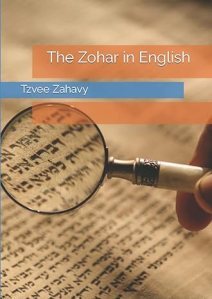 After that, you might look into one of the English translations such as The Zohar in English by Tzvee Zahavy (Author), Maurice Simon (Translator), Harry Sperling (Translator), and others.
After that, you might look into one of the English translations such as The Zohar in English by Tzvee Zahavy (Author), Maurice Simon (Translator), Harry Sperling (Translator), and others.
“The Zohar is called the greatest work of Jewish Mysticism. From the Middle Ages to today people of all faiths have studied and pored over the Zohar to explore the mysteries of God and the universe and to seek knowledge of when the redemption of the world will arrive.
“The Zohar is a mystical novel whose hero is Rabbi Simeon son of Yohai, a rabbi and disciple of Rabbi Akiva from second-century Israel. The original Aramaic work describes how Rabbi Simeon and his companions wander through the hills of Galilee, discovering and sharing mystical secrets of the Torah.
“This large format 750-page edition presents the entire work in one volume in eloquent English as translated by several great scholars of the 20th century.”
The journey will take a lifetime. You’ve been warned.
–Malcolm
January 17, 2024
‘High Noon’
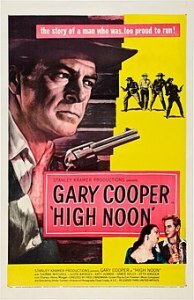 My wife hates “High Noon” and the theme song it rode in on. John Wayne didn’t like it either. I think it’s the perfect movie, not necessarily my favorite but perfect in the way it was put together: the music, the ticking block, the fact it was shot in real-time, and the fact (which the Duke hated) that normal citizens wouldn’t help a marshal fight off a gang of bad guys that would function like a SEAL team compared to people who mainly used guns for hunting.
My wife hates “High Noon” and the theme song it rode in on. John Wayne didn’t like it either. I think it’s the perfect movie, not necessarily my favorite but perfect in the way it was put together: the music, the ticking block, the fact it was shot in real-time, and the fact (which the Duke hated) that normal citizens wouldn’t help a marshal fight off a gang of bad guys that would function like a SEAL team compared to people who mainly used guns for hunting.
Wikipedia writes that “John Wayne was originally offered the lead role in the film, but refused it because he believed that Foreman’s story was an obvious allegory against blacklisting, which he actively supported.” Perhaps Wayne saw a correlation with the blacklisting nonsense, but I don’t. But then, I didn’t support blacklisting or the work of the House Un-American Activities Committee (HUAC).
From the Amazon ListingClassic western tale of a lawman whose retirement plans go awry when a revenge-seeking gunman and his gang arrive in town – will anyone stand with the marshal? Winner of four Oscars, including Gary Cooper for Best Actor.
Glenn Frankel’s Book’s Amazon Listing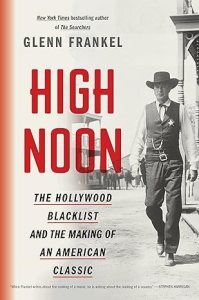 “What has been often overlooked is that High Noon was made during the height of the Hollywood blacklist, a time of political inquisition and personal betrayal. In the middle of the film shoot, screenwriter Carl Foreman was forced to testify before the House Committee on Un-American Activities about his former membership in the Communist Party. Refusing to name names, he was eventually blacklisted and fled the United States. (His co-authored screenplay for another classic, The Bridge on the River Kwai, went uncredited in 1957.) Examined in light of Foreman’s testimony, High Noon‘s emphasis on courage and loyalty takes on deeper meaning and importance.”
“What has been often overlooked is that High Noon was made during the height of the Hollywood blacklist, a time of political inquisition and personal betrayal. In the middle of the film shoot, screenwriter Carl Foreman was forced to testify before the House Committee on Un-American Activities about his former membership in the Communist Party. Refusing to name names, he was eventually blacklisted and fled the United States. (His co-authored screenplay for another classic, The Bridge on the River Kwai, went uncredited in 1957.) Examined in light of Foreman’s testimony, High Noon‘s emphasis on courage and loyalty takes on deeper meaning and importance.”
“The Stanley Kramer production does an excellent job of presenting a picture of a small western town and its people as they wait for a gun duel between the marshal and revenge-seeking killer, an event scheduled for high noon. The mood of the citizens, of Gary Cooper the marshal, and his bride (Grace Kelly), a Quaker who is against all violence, is aptly captured by Fred Zinnemann’s direction and the graphic lensing of Floyd Crosby, which perfectly pictures the heat and dust of the sun-baked locale.”
Yes, the film still plays well today even among viewers who know nothing of the HUAC/Blacklisting drama that was part of our culture when “High Noon” was made.
January 12, 2024
How unreliable are we?
 You’ve probably heard the reason why eyewitness accounts of accidents are often wrong. Eyewitnesses may not see 100% of the accident: their view is obscured by other cars/objects, they glance away, etc. But when asked about the accident, they believe they saw the whole thing since the mind tends to fill in the gaps with what probably happened even though they don’t realize there are gaps to be filled in. So, what they saw was a mix of reality and possibility.
You’ve probably heard the reason why eyewitness accounts of accidents are often wrong. Eyewitnesses may not see 100% of the accident: their view is obscured by other cars/objects, they glance away, etc. But when asked about the accident, they believe they saw the whole thing since the mind tends to fill in the gaps with what probably happened even though they don’t realize there are gaps to be filled in. So, what they saw was a mix of reality and possibility.
Many of us face the same patchy viewpoint of things that happened in our own pasts. Sure, sometimes we exaggerate and know that’s what we’re doing–perhaps for so many years we forget we ramped up the action and our role in it. Or, we flat don’t remember the whole thing and have pasted in what probably happened in the way an eyewitness unknowingly fills in what s/he thinks s/he saw.
According to the Innocence Project, “Eyewitness misidentification contributes to an overwhelming majority of wrongful convictions that have been overturned by post-conviction DNA testing.” With that in mind, can we even believe our own stories and memories?
While I believe we know when we’re exaggerating a personal yarn, I don’t think we know how often we do this when we’re telling others about college experiences, military events, or other things that happened long ago. We’re making a lot of it up. And yet, if we read a novel or short story with an unreliable narrator, we’re likely to get angry when we discover we’ve been lied to–unless there’s something in the story that tips us off.
According to MasterClass, “An unreliable narrator is an untrustworthy storyteller, most often used in narratives with a first-person point of view. The unreliable narrator is either deliberately deceptive or unintentionally misguided, forcing the reader to question their credibility as a storyteller.” This site suggests four types of unreliable narrators: (1) Picaro – the one who exaggerates, (2) Madman – the one who is detached from reality, (3) Naif – youthful ignorance, among other things, obscures his/her view of reality, (4) Liar – this person knows s/he is lying for one motivation or another.
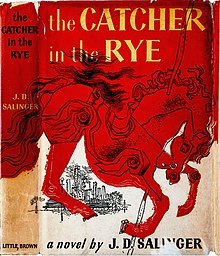 The Catcher in the Rye: Does Holden Caulfield, a troubled teen, see and understand what’s happening around him? Probably not. So we cannot trust him as as a wholly reliable narrator. According to Kylie Brant, “Holden Caulfield in The Catcher in the Rye is the ultimate unreliable narrator. Reeling from a personal trauma, his narrations provide a caustic take on the world around him. His observations of people and events are veiled in pessimism. He tells the reader he lies all the time, but the reader doesn’t necessarily believe that initially because he’s sympathetic and relatable. ”
The Catcher in the Rye: Does Holden Caulfield, a troubled teen, see and understand what’s happening around him? Probably not. So we cannot trust him as as a wholly reliable narrator. According to Kylie Brant, “Holden Caulfield in The Catcher in the Rye is the ultimate unreliable narrator. Reeling from a personal trauma, his narrations provide a caustic take on the world around him. His observations of people and events are veiled in pessimism. He tells the reader he lies all the time, but the reader doesn’t necessarily believe that initially because he’s sympathetic and relatable. ”
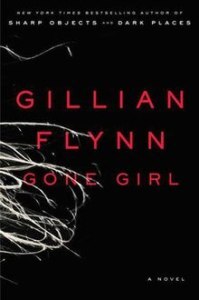 Gone Girl: According to Self-Publishing School, “Gone Girl” by Gillian Flynn presents an enthralling example of an unreliable narrator. As you follow Amy Dunne’s narration, you’ll find yourself constantly questioning her motives and intentions. Amy’s manipulative nature and hidden agenda create shocking plot twists, challenging your understanding of the characters and the events unfolding in the story. The strategic use of unreliable perspectives adds layers of complexity to the narrative, making “Gone Girl” a gripping and unforgettable psychological thriller.”
Gone Girl: According to Self-Publishing School, “Gone Girl” by Gillian Flynn presents an enthralling example of an unreliable narrator. As you follow Amy Dunne’s narration, you’ll find yourself constantly questioning her motives and intentions. Amy’s manipulative nature and hidden agenda create shocking plot twists, challenging your understanding of the characters and the events unfolding in the story. The strategic use of unreliable perspectives adds layers of complexity to the narrative, making “Gone Girl” a gripping and unforgettable psychological thriller.”
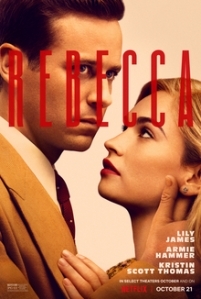 Rebecca by Daphne du Maurier: CBR notes that “Mrs. de Winter, the narrator in the new adaptation of Rebecca from Ben Wheatly, is a voice of confusion who can’t keep the facts straight.” The new Mrs. deWinter cannot compete with the original, so readers/viewers cannot totally accept her perspective. A close look at the original film will show the same lacks of certainty.
Rebecca by Daphne du Maurier: CBR notes that “Mrs. de Winter, the narrator in the new adaptation of Rebecca from Ben Wheatly, is a voice of confusion who can’t keep the facts straight.” The new Mrs. deWinter cannot compete with the original, so readers/viewers cannot totally accept her perspective. A close look at the original film will show the same lacks of certainty.
Truth, it seems, in our lives and in our feature films and novels is always relative. We are the storytellers of our lives as authors are the storytellers of their novels and screenplays. At some point, most of us accept the fact that all of it is unreliable, intentionally or otherwise.
–Malclm
January 9, 2024
‘The Milagro Beanfield War’ by John Nichols, a film by Robert Redford
 I’m thinking of this film today because I just learned that John Nichols died at 83 in November, and I’m rather embarrassed that I missed it at the time especially when such publications as The New York Times and The Guardian carried the news. (I can find no public-domain photographs of Nichols.)
I’m thinking of this film today because I just learned that John Nichols died at 83 in November, and I’m rather embarrassed that I missed it at the time especially when such publications as The New York Times and The Guardian carried the news. (I can find no public-domain photographs of Nichols.)
The Guardian writes, “Nichols won early recognition with the 1965 publication of his offbeat love story The Sterile Cuckoo, later made into a movie starring Liza Minnelli. The coming-of-age book and subsequent movie were set amid private northeastern colleges that were a familiar milieu to Nichols, who attended boarding school in Connecticut and private college in upstate New York.
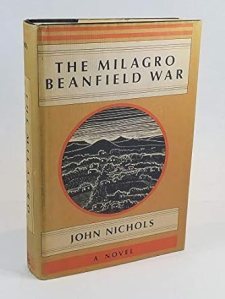 First Printing
First Printing
“He moved in 1969 with his first wife from New York City to northern New Mexico, where he found inspiration for a trilogy of novels anchored in the success of The Milagro Beanfield War.”
Wikipedia writes, “Critic Richard Scheib liked the film’s direction and the characters portrayed. He wrote, “Redford arrays a colorfully earthy ensemble of characters. The plot falls into place with lazy, deceptive ease. Redford places it up against a gently barbed level of social commentary, although this is something that comes surprisingly light-heartedly. There’s an enchantment to the film – at times it is a more successful version of the folklore fable that Francis Ford Coppola’s Finian’s Rainbow (1968) tried to be but failed.”
I liked the movie although the reviews were mixed.
From The Publisher“Joe Mondragon, a feisty hustler with a talent for trouble, slammed his battered pickup to a stop, tugged on his gumboots, and marched into the arid patch of ground. Carefully (and also illegally), he tapped into the main irrigation channel. And so began-though few knew it at the time of Milagro beanfield war. But like everything else in the dirt-poor town of Milagro, it would be a patchwork war, fought more by tactical retreats than by battlefield victories. Gradually, the small farmers and sheepmen begin to rally to Joe’s beanfield as the symbol of their lost rights and their lost lands. And downstate in the capital, the Anglo water barons and power brokers huddle in urgent conference, intent on destroying that symbol before it destroys their multimillion-dollar land-development schemes.
“The tale of Milagro’s rising is wildly comic and lovingly tender, a vivid portrayal of a town that, half-stumbling and partly prodded, gropes its way toward its own stubborn salvation.”
–Malcolm
January 6, 2024
‘Special Topics in Calamity Physics’ by Marisha Pessl
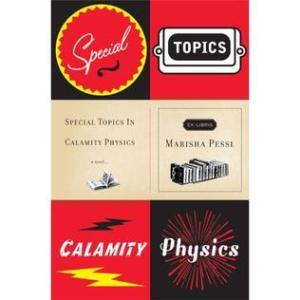 I read this novel when it came out in 2006 and became so out of touch with reality that I found it necessary to spend several years in a psychiatric institution named “Cuckoo’s Nest” where my only friend was Nurse Ratched because we had an on-again/off-again fling during the shock treatments. This is the kind of thing that happens to a reader after reading a book with an unreliable narrator. I promised Mildred on the day I was discharged that I would one day re-read Marisha Pessl’s (Neverworld Wake, Night Film) novel Calamity Physics which I’m doing now even though Mildred Rached died in a state of shock on her wedding night and will never know.
I read this novel when it came out in 2006 and became so out of touch with reality that I found it necessary to spend several years in a psychiatric institution named “Cuckoo’s Nest” where my only friend was Nurse Ratched because we had an on-again/off-again fling during the shock treatments. This is the kind of thing that happens to a reader after reading a book with an unreliable narrator. I promised Mildred on the day I was discharged that I would one day re-read Marisha Pessl’s (Neverworld Wake, Night Film) novel Calamity Physics which I’m doing now even though Mildred Rached died in a state of shock on her wedding night and will never know.
 Website Photo
Website Photo“Marisha Pessl’s dazzling debut sparked raves from critics and heralded the arrival of a vibrant new voice in American fiction. At the center of Special Topics in Calamity Physics is clever, deadpan Blue van Meer, who has a head full of literary, philosophical, scientific, and cinematic knowledge. But she could use some friends. Upon entering the elite St. Gallway School, she finds some—a clique of eccentrics known as the Bluebloods. One drowning and one hanging later, Blue finds herself puzzling out a byzantine murder mystery. Nabokov meets Donna Tartt (then invites the rest of the Western Canon to the party) in this novel—with visual aids drawn by the author—that has won over readers of all ages.”
from Kirkus Reviews“The writing is clever, the text rich with subtle literary allusion. But while even the gimmicks work well (chapters are structured like a literature syllabus; hand-drawn visual aids appear throughout), they don’t compensate for the fact that The Secret History came first.
“Sharp, snappy fun for the literary-minded.”
The very reliable narrator of my magical realism books set in Florida is a cat.
January 5, 2024
The new year never seems to live up to the Times Square excitement
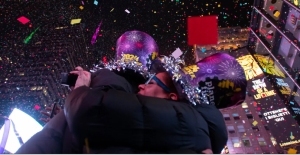 People are still shooting each other, having sex, drinking too much wine, getting married, watching bad TV, dying of old age (so long Glynis Johns at 100), and eating too much fast food. When will it end?
People are still shooting each other, having sex, drinking too much wine, getting married, watching bad TV, dying of old age (so long Glynis Johns at 100), and eating too much fast food. When will it end?
I’m more concerned about the mass shootings than the wine and the sex and the marriage–like the senseless attack at Iowa’s Perry High School. Shooters kill a bunch of people and then kill themselves. Why don’t they kill themselves first? That would reduce the amount of grief and paperwork.
 We expect too much magic, it seems, with the changing of the year. Or maybe we don’t expect enough. Or, worse yet, we expect the same old, same old. Speeding tickets, DUIs, getting fired, getting hired, texting too much, running into a tree while texting, being shot by the cops while breaking into a store, finding the Oak Island Treasure. Yes, when will it end?
We expect too much magic, it seems, with the changing of the year. Or maybe we don’t expect enough. Or, worse yet, we expect the same old, same old. Speeding tickets, DUIs, getting fired, getting hired, texting too much, running into a tree while texting, being shot by the cops while breaking into a store, finding the Oak Island Treasure. Yes, when will it end?
I have high hopes for the human race, but low expectations. Perhaps you feel that way, too.
I don’t think “it” will end because it’s easier for all of us to sit back and watch “it” happen on TV without worrying about “it” (all the bad stuff) than figuring out how to fix “it.” Okay, most of us don’t know how to fix it, though one would think that by working on the problem as a group we could make progress with the changing of the years.
Then, New Year’s Eve would mean something.
–Malcolm
January 4, 2024
‘The Waters’ by Bonnie Jo Campbell
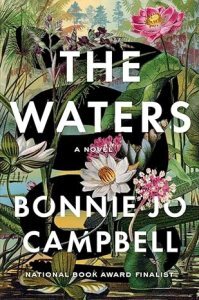 Bonnie Jo Campbell (American Salvage, Q Road, Once Upon a River, Love Letters to Sons of Bitches) will release a new novel The Waters on January 9. Entertainment Weekly calls Campbell “a bard, a full-throated singer whose melodies are odes to farms and water and livestock and fishing rods and rifles, and to hardworking folks who know the value of life as well as the randomness of life’s troubles.” Her fans will welcome this new story that as author Daniel Woodrell (Winter’s Bone) said, “tells a story so deeply rooted in a specific place that the accumulation of details approaches the magical.”
Bonnie Jo Campbell (American Salvage, Q Road, Once Upon a River, Love Letters to Sons of Bitches) will release a new novel The Waters on January 9. Entertainment Weekly calls Campbell “a bard, a full-throated singer whose melodies are odes to farms and water and livestock and fishing rods and rifles, and to hardworking folks who know the value of life as well as the randomness of life’s troubles.” Her fans will welcome this new story that as author Daniel Woodrell (Winter’s Bone) said, “tells a story so deeply rooted in a specific place that the accumulation of details approaches the magical.”
“A master of rural noir returns with a fierce, mesmerizing novel about exceptional women and the soul of a small town.
“On an island in the Great Massasauga Swamp―an area known as “The Waters” to the residents of nearby Whiteheart, Michigan―herbalist and eccentric Hermine “Herself” Zook has healed the local women of their ailments for generations. As stubborn as her tonics are powerful, Herself inspires reverence and fear in the people of Whiteheart, and even in her own three estranged daughters. The youngest―the beautiful, inscrutable, and lazy Rose Thorn―has left her own daughter, eleven-year-old Dorothy “Donkey” Zook, to grow up wild.
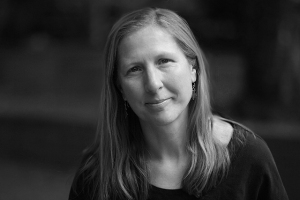 Campbell
Campbell
“Donkey spends her days searching for truths in the lush landscape and in her math books, waiting for her wayward mother and longing for a father, unaware that family secrets, passionate love, and violent men will flood through the swamp and upend her idyllic childhood. Rage simmers below the surface of this divided community, and those on both sides of the divide have closed their doors against the enemy. The only bridge across the waters is Rose Thorn.
“With a ‘ruthless and precise eye for the details of the physical world’ (Jane Smiley, New York Times Book Review), Bonnie Jo Campbell presents an elegant antidote to the dark side of masculinity, celebrating the resilience of nature and the brutality and sweetness of rural life.”
Kirkus Reviews“The wise woman privy to nature’s secrets has become an overused fictional trope, but it’s mitigated here by Campbell’s sharply drawn characters and her refusal to make easy judgments about them. A birth rather predictably reconciles the town’s men with the Zook women, but the new arrival does not solve everyone’s problems. Campbell’s thoughtfully rendered characters find life rewarding and bewildering in equal measure. Atmospheric, well-written, and generally satisfying despite some overly familiar elements.”
–Malcolm
January 3, 2024
‘A Naturalist and Other Beasts: Tales from a Life in the Field’ by George B. Schaller
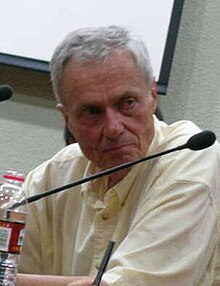 Schaller in 2005
Schaller in 2005
George Beals Schaller (born 26 May 1933) is an American mammalogist, biologist, conservationist and author. Schaller is recognized by many as the world’s preeminent field biologist, studying wildlife throughout Africa, Asia and South America. Born in Berlin, Schaller grew up in Germany, but moved to Missouri as a teen. He is vice president of Panthera Corporation and serves as chairman of their Cat Advisory Council. Schaller is also a senior conservationist at the Bronx Zoo-based Wildlife Conservation Society.” -Wikipedia
I became aware of George Schaller in 1978 when Peter Matthiessen accompanied him on a two-month trek of the Tiberian Plateau that resulted in the book The Snow Leopard. (1978). Subsequently, I read Schaller’s Stones of Silence (1980) about the same region from a naturalist’s point of view. I’ve been a fan ever since.
From the Publisher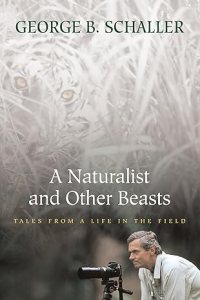 “Since the 1950s, eminent field biologist George Schaller has roamed through many lands observing wild animals and conducting landmark long-term studies that have deepened our understanding of these creatures. He has reported and reflected on his work in classic, much-acclaimed books, including The Last Panda and National Book Award winner The Serengeti Lion, but much of his best writing has been ephemeral, published in magazines, only to drop out of sight.
“Since the 1950s, eminent field biologist George Schaller has roamed through many lands observing wild animals and conducting landmark long-term studies that have deepened our understanding of these creatures. He has reported and reflected on his work in classic, much-acclaimed books, including The Last Panda and National Book Award winner The Serengeti Lion, but much of his best writing has been ephemeral, published in magazines, only to drop out of sight.
“This collection features 19 short pieces brought together in book form to offer a unique overview of his life in the field.
“Chapters describe stalking tigers in India and jaguars in Brazil’s Pantanal swamps, studying mountain gorillas in Central Africa and predator-prey relations in the Serengeti, tracking newfound species on the wild border of Vietnam and Laos, searching for snow leopards in the Hindu Kush, and Schaller’s groundbreaking work with giant pandas in Sichuan. Later accounts broaden the focus from individual creatures to whole ecosystems.
“‘The careless rapture of my early studies has been replaced more and more by efforts to protect animals and their habitats,’ he writes.
“New to this book are Schaller’s introductions for each chapter, which add and update information, and an overall introduction that looks back on his remarkable career.”
From Orion Magazine’s Review“’At least once in a lifetime,’ Schaller admonishes us, ‘everyone should make a pilgrimage into the wilderness to dwell on its wonders and discover the idyll of a past now largely gone.’ This book is a medley of such soul-nourishing forays, nineteen short essays previously published in various periodicals and books over the past half-century, each updated with a fact-filled introduction.
“The charm of this book is Schaller’s unabashed love of his subjects and his lyrical way of describing them; ‘knowing such animals individually,’ he writes, ‘one begins to view an area with a new intimacy and with a caring that turns into a special enchantment.’ Schaller seeks ‘a deeper understanding, one beyond soulless statistics.’ In the hands of anybody else, declarations like these might be taken as anthropomorphic. But Schaller’s credentials as a tough-as-nails scientist are impeccable, and his enthusiasm for getting down and dirty with his subjects, combined with his literary skill, forge some of the best nature writing of our time.”
Malcolm R. Campbell is the author of magical realism novels set in the Florida Panhandle of the 1950s.



